Addressing the Pitfalls of Influencer Marketing
There is no doubt that the rise of the modern-day influencer has changed commerce. Few retail industries have yet to embrace this newly emerging marketing strategy to grow their businesses. From beauty 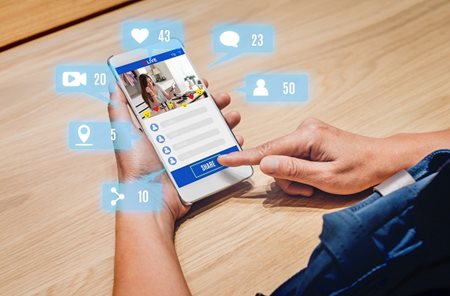 and fashion to wellness and travel, influencers have revolutionized everything from commerce, to marketing, to consumer behavior.
and fashion to wellness and travel, influencers have revolutionized everything from commerce, to marketing, to consumer behavior.
As a relatively new industry, influencer marketing is still quite raw, with little standards and regulations. The FTC (U.S.), Advertising Standard Agency (U.K.), Ad Standards and Competition Bureau (CDN), and other world regulatory bodies are trying their best to address these issues and implement guidelines. Never the less, influencer marketing continues to fall in a grey area, though the lack of definition is to be expected given the constant development of new technologies. Most advertising guidelines today cover issues such as disclosure and strict regulation regarding deceptive marketing practices.
Marketing 2.0
Brands saw the opportunities in using influencers to market and quickly embraced and capitalized on the creators’ authorities over their audiences. The beauty and fashion industry are perfect examples of the power that influencers wield, with many trade names replacing celebrities in campaigns, launching their own brand collaborations, and building true cult followings in the process.
There are many, positive attributes with influencers if you’re a marketer. They produce original content; they can be wonderful brand ambassadors with ready-made loyal and engaged audiences, and let’s face it, they have the potential to be excellent value for the money when compared to traditional advertising.
According to the latest Mediakix Influencer Marketing survey, marketers love the trend, with 80% of them finding the strategy to be effective and 89% saying that the ROI is comparable, or even better, than traditional marketing channels. Only a third of marketers are planning to not increase their influencer marketing budgets in 2019, and a whopping 17% of companies allocate over half of their total marketing and advertising budget to influencer marketing.
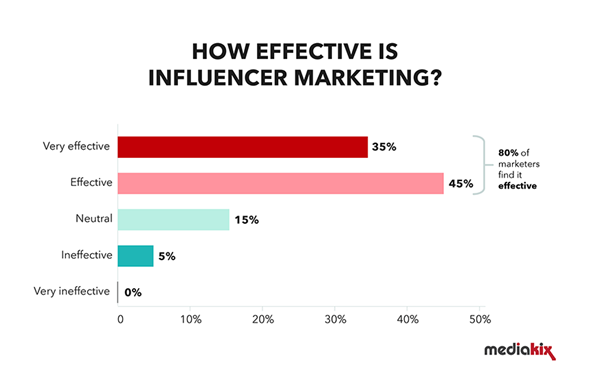
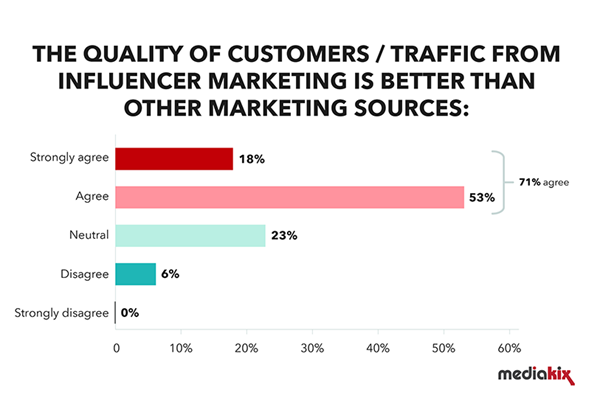
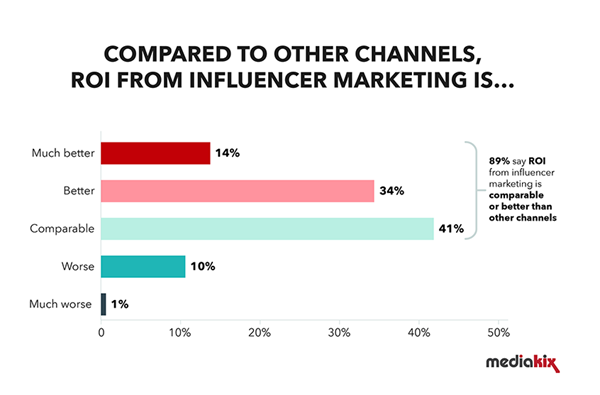
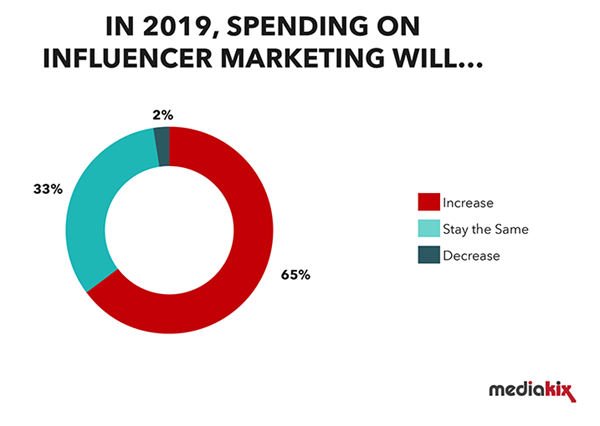
Dubious Influencing
Influencer marketing works until it doesn’t. It’s a marvelous sales tool when you have genuine influencers with bona fide audiences and authentic engagement. Although, as Anders Ankarlind, founder of A Good Company learned, ‘legit’ influencers are hard to come by. After failing to get results with his own influencer outreach campaign, Ankarlind decided to investigate the matter more closely. It turned out that unsettlingly large numbers of influencers were ‘faking it’ — insert sarcastic surprised meme here. According to a survey he conducted among his own influencer network, he found out that 16% of influencers bought followers, 14% bought likes, and 40% used engagement pods to boost their numbers. Ankarlind decided to take his research further and partnered up with analytics firm, HypeAuditor, to dig deeper. They looked at over 1.84 million accounts across the globe, and the results showed that Instagram’s monthly user data seemed to be overrated by up to 45%. You can read more about the Anders’ results in his The $744M Influencer Marketing Scam article on Medium.
University of Baltimore’s, Robert Cavazos, partnered up with Tel-Aviv-based cybersecurity company, CHEQ, to also investigate the phenomenon of fake influencers. Their Fake Influencer Marketing in 2019 report estimated that fake influencers and followers would cost $1.3 billion this year in online ad spending. According to the report, Social Chain, a metrics company, found that up to 25% of influencers that were audited engaged in some type of fraudulent activity. Naturally, this underhandedness hurts brands. According to the report, brands like Ritz Carlton, P&G Pampers, and L’Occitane worked with deceitful influencers where up to 78% of their followers turn out to be bogus. Sway Ops claimed that up to 50% of engagements on sponsored posts were phony. I could go on and on. Many companies in the field have done studies and audits proving time and again that influencers misrepresent themselves. Not all, but enough to be a significant issue.

As an industry obsessed with numbers, ROI, and KPIs, it has been increasingly difficult for marketers to quantify and measure the efficacy of employing influencer marketing strategies. With many marketers simply relying on ‘like’ and ‘follower’ numbers, UMVs, and page views, some influencers have turned to less orthodox practices to deliver on these numbers. Follower factories and like-farms are recognized cheating tactics, especially with those influencers who rely on social media as their main promotional channels. It’s a considerable threat that is harming this emerging industry from the inside.
Daniel Rowles and Ciaran Rogers made a fantastic point in their “Exploring Instagram Influencers and Fake Social Influence” episode of their Digital Marketing Podcast regarding the liability a traditional advertising company would bear, and the consequences they would face were they to engage in similar misleading practices. When dealing with influencers, there are no such assurances and brands can’t do much to recover lost costs. Likewise, influencers aren’t protected either — a lesson many learned the hard way when Mode Media collapsed — leaving many content creators unceremoniously unengaged and unpaid.
I reached out to Emilia Cullborg, who works in Marketing & Communication at A Good Company to gain more insight into the unsavory practice of fraudulent influencing.
Given all of your experience and the disturbing results you have uncovered in your research, do think brands should continue to work with influencers?
“Yes, but we recommend a different approach. We have changed our influencer marketing strategy in the following way; we have stopped giving away free products and instead offer our ambassadors to buy them at a discount. Not only does this chime better with our message of thoughtful consumption, but it also helps us find ambassadors that can truly stand behind our brand and actually like our products and our mission. Furthermore, we completely stopped looking at the usual metrics (followers, engagement) because we now know that these are easily manipulated. We instead recommend that companies look at sales generated and overall fit with the brand identity. An influencer with 5,000 organic followers with a high engagement can be a great deal more successful in helping spreading the word about your brand than an influencer with a following of 30,000 but with a low organic following and engagement. This demands more from marketing specialists — both knowledge and time spent curating collaborations, and that’s why we decided to share our study!”
What advice would you give other business owners before starting to work with influencers?
“Find influencers that seem genuinely in line with the values of your brand. Don’t look too much at the numbers as these are easily manipulated. Do your due diligence on their followers and engagement to make sure that it is organic and genuine.”
After releasing the results to your investigation, what type of feedback have you received from brands and influencers alike?
“Most brands that we have talked to were as surprised as we were to see the extent of the fraudulent behaviour. We have also received support from influencers with organic followings trying to survive in a sea of manipulated numbers, they appreciate the fact that we are lifting this issue to be discussed — and hopefully — addressed.”
Lastly, how much accountability should be placed on brands? Do you think brands contributed to the problems you uncovered in your research?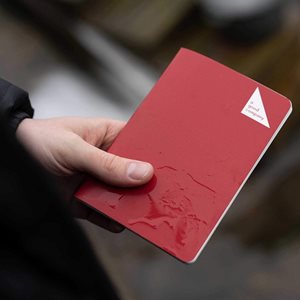
“We, as a brand, realised our own role in this, and we suggest other brands do as well. Think of it this way: If brands pay you for the number of followers and engagement level you can bring to the table and there is a function out there to ensure that both those metrics remain high on your account, thereby ensuring your income - what is stopping you from manipulating the numbers? Instagram hasn’t figured it out yet, and because brands generally tend not to look at the organic vs. fraudulent metrics in their day-to-day marketing, there is really nothing holding the concerned influencers to a higher standard than to manipulate their numbers.”
What now?
With all of this being said, where do we go from here? What is the corrective action that can be taken to change this toxic culture and environment?
In my opinion, it all starts with the brands. Many companies have taken notice of the widespread fraud issue, and some are taking more forceful stands. Unilever’s Keith Weed spoke out last year when he declared that the brand will undertake “urgent action now to rebuild trust before it’s gone forever.” As a result, Unilever has vowed not to work with influencers that buy followers and will prioritize partners that increase transparency to help eradicate corrupt practices. Weed added, “At Unilever, we believe influencers are an important way to reach consumers and grow our brands. Their power comes from a deep, authentic, and direct connection with people, but certain practices like buying followers can easily undermine these relationships.”
Companies like HypeAuditor, Fakecheck, and SparkToro are also stepping up to help brands. HypeAuditor uses open data and AI technologies to check the authenticity of content creators and can assist brands in choosing to work with quality influencers.
Influencers are no longer hobbyists with a platform. They have a meaningful impact on consumers and have an ethical duty, to be honest to both brands, and their followers. How do we encourage influencers to act and behave ethically? Once again, I feel it all goes back to the brands and marketing professionals. Companies need to do their due diligence to ensure they are allocating their budgets wisely and working meaningfully with valid influencers. This is not only good for the brands, given that they are investing their ad dollars and getting an actual return on their investment, but it also promotes a healthy, honest influencer community.
As long as brands continue to support inauthentic and problematic influencers, these types of duplicitous practices will continue. The brand has a responsibility to hold up their end of the bargain and stop rewarding bad behavior. Negative endorsement goes both ways. A brand that irresponsibly partners up with an influencer who bamboozles the buying public is sending a clear message to the world that they are okay with fraud.
Luckily, there are still plenty of reputable content creators out there. Micro-influencers are those content creators with relatively small follower and like numbers, but high and unadulterated engagement rates. Marketers need to start looking past the numbers and begin to support and reward those creators that create authentic, original content, and have honest-to-goodness, purely engaged audiences.

Ellie Somfelean
Ellie is a Reporter and Content Marketer with CMSC Media. She is passionate about social media and digital marketing. She has a vast experience with content creation, influencer marketing and brand promotion.